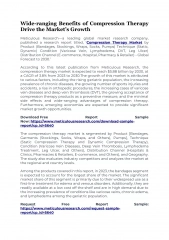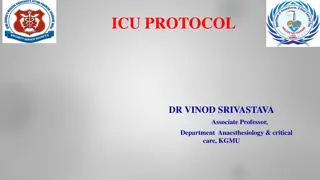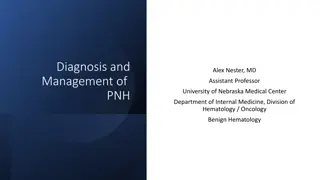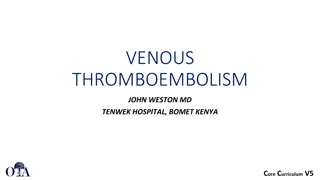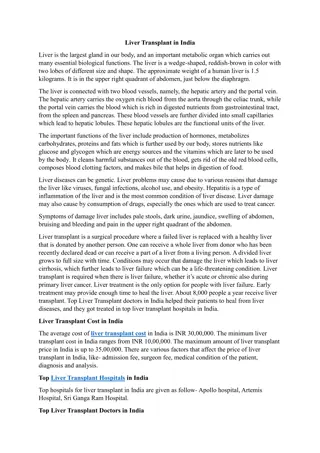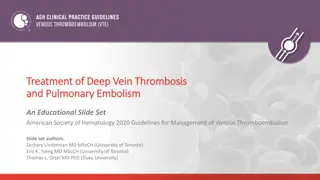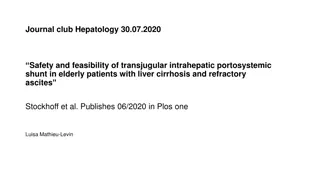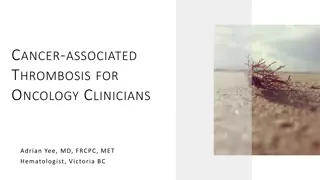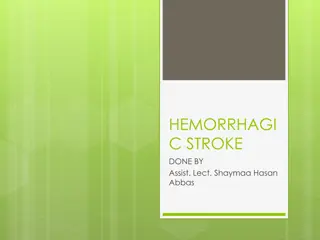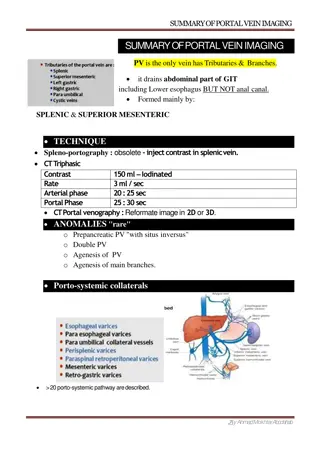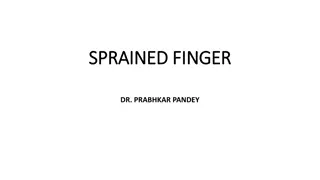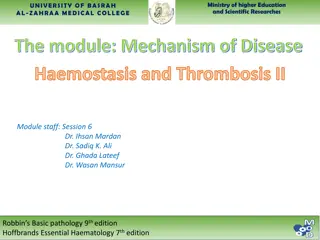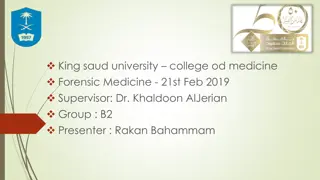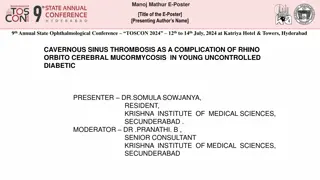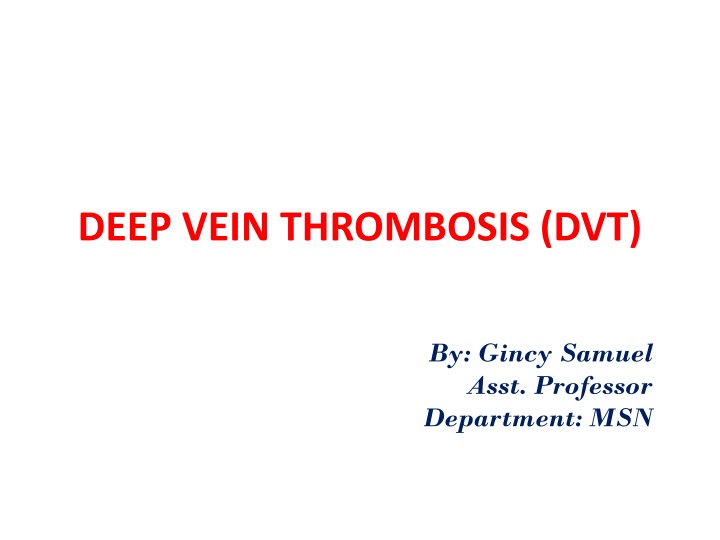
Deep Vein Thrombosis (DVT) - Causes, Symptoms, and Treatment
Deep Vein Thrombosis (DVT) is a condition where blood clots form in deep veins, commonly in the legs. Causes include injury, surgery, medications, and limited movement. Recognize symptoms like leg swelling, pain, skin discoloration, and warmth. Complications like Pulmonary Embolism can be life-threatening. Diagnosis involves ultrasound and blood tests. Treatment includes anticoagulants, thrombolytic drugs, and preventive measures like compression stockings. Learn prevention tips to reduce DVT risk.
Download Presentation

Please find below an Image/Link to download the presentation.
The content on the website is provided AS IS for your information and personal use only. It may not be sold, licensed, or shared on other websites without obtaining consent from the author. If you encounter any issues during the download, it is possible that the publisher has removed the file from their server.
You are allowed to download the files provided on this website for personal or commercial use, subject to the condition that they are used lawfully. All files are the property of their respective owners.
The content on the website is provided AS IS for your information and personal use only. It may not be sold, licensed, or shared on other websites without obtaining consent from the author.
E N D
Presentation Transcript
DEEP VEIN THROMBOSIS (DVT) By: Gincy Samuel Asst. Professor Department: MSN
DEEP VEIN THROMBOSIS (DVT) The blood clot (thrombus) forms in one or more of the deep veins in the body, usually in the legs.
Causes Injury to vein Surgery Certain medications Limited movement
Risk factors Family history Overweight or obese Blood-clotting disorder Prolonged bed rest Pregnancy Birth control pills Smoking Diseases: Cancer, Heart failure
Symptoms Swelling in the affected leg Pain in the leg The cramping pain in the calf Red or discolored skin on the leg Warm skin in the affected leg
Complications Pulmonary embolism: The blood vessel in the lung becomes blocked by a blood clot (thrombus) that travels to the lung, usually from legs.
Signs and symptoms of a pulmonary embolism: Sudden shortness of breath Chest pain during deep breath or cough Fainting Rapid pulse Blood in the cough
Diagnostic Test Ultrasound Blood test Venography CT or MRI scans
Treatment Anticoagulants: Blood thinners, prevent clots from getting bigger Thrombolytic drugs: to break the blood clots vena cava filter: prevent clots to break loose and obstructing in the lungs. Compression stockings: prevent swelling
Prevention Advice to avoid sitting or crossing legs for a longer duration Advice to lose weight and quit smoking Advice regular exercise to lowers the risk of blood clots Advice to check for excessive bleeding during the time of medications

